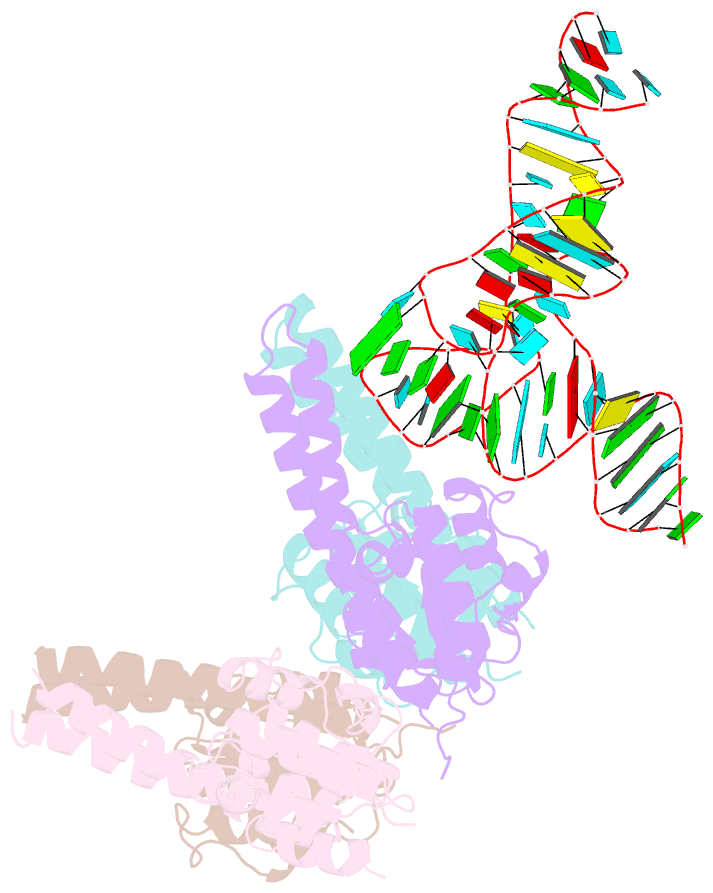Summary information and primary citation
- PDB-id
- 7e8o; SNAP-derived features in text and JSON formats;
DNAproDB
- Class
- hydrolase
- Method
- X-ray (2.804 Å)
- Summary
- Crystal structure of proteinaceous rnase p(prorp) from planctomycetes bacterium gwf2_40_8 complexed with escherichia coli histidine pre-trna
- Reference
- Li Y, Su S, Gao Y, Lu G, Liu H, Chen X, Shao Z, Zhang Y, Shao Q, Zhao X, Yang J, Cao C, Lin J, Ma J, Gan J (2022): "Crystal structures and insights into precursor tRNA 5'-end processing by prokaryotic minimal protein-only RNase P." Nat Commun, 13, 2290. doi: 10.1038/s41467-022-30072-6.
- Abstract
- Besides the canonical RNA-based RNase P, pre-tRNA 5'-end processing can also be catalyzed by protein-only RNase P (PRORP). To date, various PRORPs have been discovered, but the basis underlying substrate binding and cleavage by HARPs (homolog of Aquifex RNase P) remains elusive. Here, we report structural and biochemical studies of HARPs. Comparison of the apo- and pre-tRNA-complexed structures showed that HARP is able to undergo large conformational changes that facilitate pre-tRNA binding and catalytic site formation. Planctomycetes bacterium HARP exists as dimer in vitro, but gel filtration and electron microscopy analysis confirmed that HARPs from Thermococcus celer, Thermocrinis minervae and Thermocrinis ruber can assemble into larger oligomers. Structural analysis, mutagenesis and in vitro biochemical studies all supported one cooperative pre-tRNA processing mode, in which one HARP dimer binds pre-tRNA at the elbow region whereas 5'-end removal is catalyzed by the partner dimer. Our studies significantly advance our understanding on pre-tRNA processing by PRORPs.





